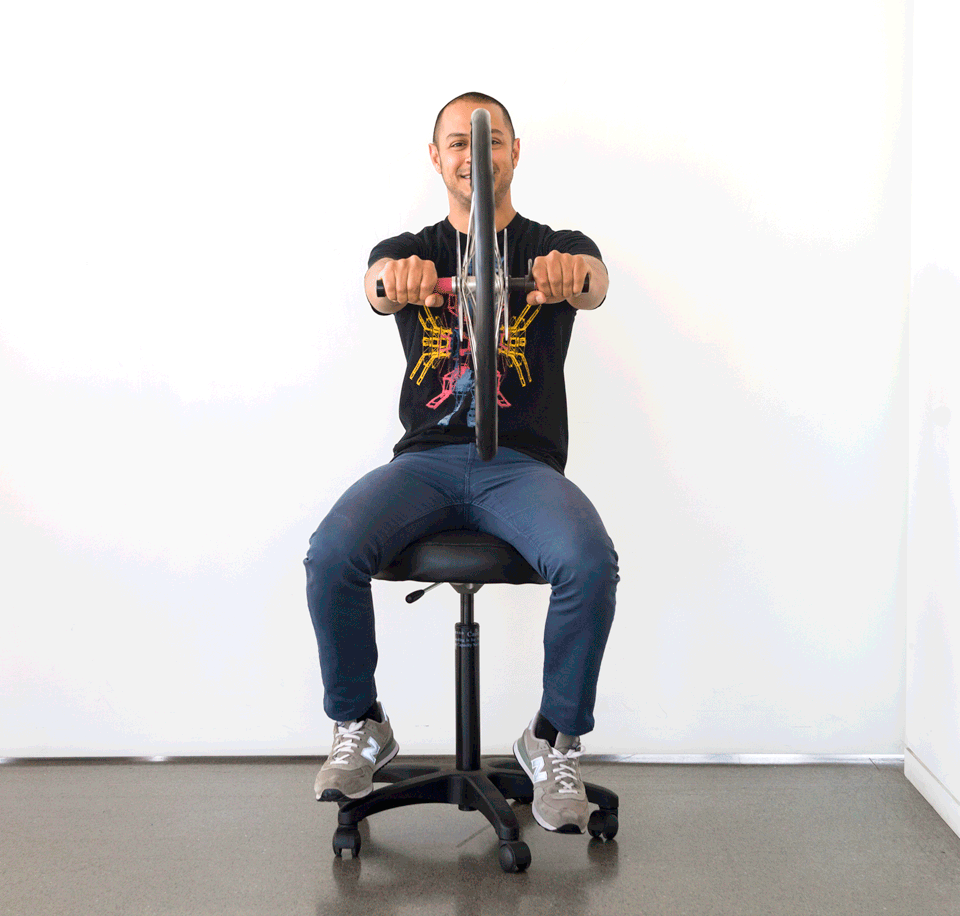Action and Reaction in Rotation
Storyboard 
Newton's third principle in the case of rotation defines that the torques have to be generated in pairs so that their sum is zero. This implies that before an action there is always a reaction of equal magnitude but in the opposite direction.
ID:(757, 0)
Action and reaction in torque
Image 
Similar to the case of translational motion, where the third principle states that every action has an equal and opposite reaction. This means that if I try to rotate an object in one direction, its support will rotate in the opposite direction.
An example of this is a rotating chair. This exercise can be done with extended legs and arms, attempting to rotate in the same direction, or with an object that is rotating and an attempt to alter its angular momentum, which generates an opposing angular momentum in the support:

.
ID:(10291, 0)
Model
Top 
Parameters
Variables
Calculations
Calculations
Calculations
Equations
$ \Delta L_1 = I_1 \Delta \omega $
DL = I * Domega
$ \Delta L_2 = I_2 \Delta \omega $
DL = I * Domega
$ T_m =\displaystyle\frac{ \Delta L_1 }{ \Delta t }$
T_m = DL / Dt
$ T_m =\displaystyle\frac{ \Delta L_2 }{ \Delta t }$
T_m = DL / Dt
$ T_R = - T_A$
T_R = - T_A
ID:(15836, 0)
Action and reaction in torque
Equation 
Similar to the case of translational motion, where the third principle states that every action has an equal and opposite reaction:
| $ F_R =- F_A $ |
The analogous concept in rotation is
Since action and reaction in the case of forces are given by
| $ F_R =- F_A $ |
multiplying this equation by the radius yields
$rF_R=-rF_A$
and with
| $ T = r F $ |
we have
| $ T_R = - T_A$ |
.
.
ID:(11006, 0)
Medium Torque (1)
Equation 
In the case of translation, the second principle defines how translational motion is generated with the definition of force
| $ F \equiv\displaystyle\frac{ \Delta p }{ \Delta t }$ |
In the case of rotation, within a time interval $\Delta t$, the angular momentum $\Delta L$ changes according to:
.
ID:(9876, 1)
Medium Torque (2)
Equation 
In the case of translation, the second principle defines how translational motion is generated with the definition of force
| $ F \equiv\displaystyle\frac{ \Delta p }{ \Delta t }$ |
In the case of rotation, within a time interval $\Delta t$, the angular momentum $\Delta L$ changes according to:
.
ID:(9876, 2)
Variation of angular momentum (1)
Equation 
If a variation of Angular Momentum ($\Delta L$) is given with the moment of Inertia ($I$) constant, then a difference in Angular Speeds ($\Delta\omega$) is generated according to:
ID:(15843, 1)
Variation of angular momentum (2)
Equation 
If a variation of Angular Momentum ($\Delta L$) is given with the moment of Inertia ($I$) constant, then a difference in Angular Speeds ($\Delta\omega$) is generated according to:
ID:(15843, 2)
